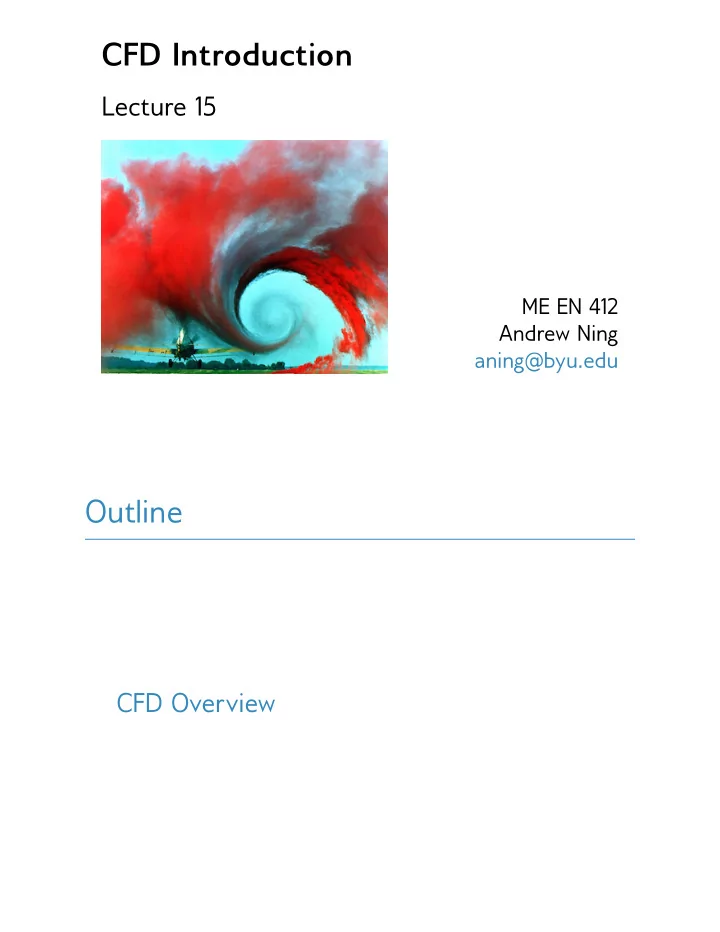

CFD Introduction Lecture 15 ME EN 412 Andrew Ning aning@byu.edu Outline CFD Overview
CFD Overview Simulation Process 1. Define the problem 2. Model the geometry and a fluid domain 3. Create a mesh 4. Specify boundary conditions 5. Initialize flow field and iteratively solve governing equations on mesh 6. Post-process 7. Verification and validation 8. Repeat process
Define the Problem Model Domain and Geometry
Create Mesh Structured Mesh:
Unstructured Mesh: From SU2, Stanford University Always Perform a Grid Convergence Study!
Boundary Conditions Commonly used types available in Star-CCM+: • Velocity inlet : known inlet velocity. for incompressible flows • Free-stream : Specify freestream pressure, temperature, Mach number. Must be using ideal gas model. • Pressure outlet : outflow • Axis : for 2D axisymmetric flows • Symmetry plane • Wall : no normal flow. if viscous no slip as well. From SU2, Stanford University
Initialize and Iteratively Solve Verification and Validation Verification: Assess accuracy of the solution to a computational model. Validation: Assess accuracy of computational simulation as compared to physical reality.
Recommend
More recommend